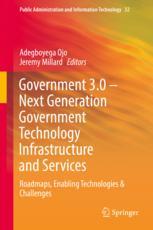

Most ebook files are in PDF format, so you can easily read them using various software such as Foxit Reader or directly on the Google Chrome browser.
Some ebook files are released by publishers in other formats such as .awz, .mobi, .epub, .fb2, etc. You may need to install specific software to read these formats on mobile/PC, such as Calibre.
Please read the tutorial at this link: https://ebookbell.com/faq
We offer FREE conversion to the popular formats you request; however, this may take some time. Therefore, right after payment, please email us, and we will try to provide the service as quickly as possible.
For some exceptional file formats or broken links (if any), please refrain from opening any disputes. Instead, email us first, and we will try to assist within a maximum of 6 hours.
EbookBell Team

4.4
62 reviewsHistorically, technological change has had significant effect on the locus of administrative activity, cost of carrying out administrative tasks, the skill sets needed by officials to effectively function, rules and regulations, and the types of interactions citizens have with their public authorities. Next generation Public Sector Innovation will be “Government 3.0” powered by innovations related to Open and big data, administrative and business process management, Internet-of-Things and blockchains for public sector innovation to drive improvements in service delivery, decision and policy making and resource management. This book provides fresh insights into this transformation while also examining possible negative side effects of the increasing ope
nness of governments through the adoption of these new innovations. The goal is for technology policy makers to engage with the visions of Government 3.0 . Researchers should be able to critically examine some of the innovations described in the book as the basis for developing research agendas related to challenges associated with the adoption and use of some of the associated technologies. The book serves as a rich source of materials from leading experts in the field that enables Public administration practitioners to better understand how these new technologies impact traditional public administration paradigms. The book is suitable for graduate courses in Public Sector Innovation, Innovation in Public Administration, E-Government and Information Systems. Public sector technology policy makers, e-government, information systems and public administration researchers and practitioners should all benefit from reading this book.